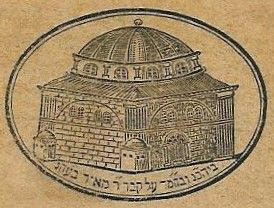

April 26, 2024 ~ PESAH. SIGAH/AJAM/BAYAT.
| Day | Status |
|---|---|
| Rosh HaShana (1 & 2 Tishri) | High Holiday |
| Fast of Gedalya (3 or 4 Tishri) | Minor Fast |
| Ereb Yom Kippur (9 Tishri) | Yehi Shem |
| Yom Kippur (10 Tishri) | High Holiday |
| 11 Tishri until end of month | Yehi Shem |
| Hannukah (25 Kislev-2 Tebet) | Hallel |
| 10 Tebet | Minor Fast |
| 17 Tebet | Yehi Shem for Baghdad only |
| New Year for Trees (15 Shebat) | Yehi Shem |
| Fast of Esther (13 Adar) | Minor Fast |
| Purim (14 / 15 Adar) | Yehi Shem |
| Purim Misrayim (28 Adar) | Yehi Shem for Egyptians only |
| Entire Month of Nissan | Yehi Shem |
| Israel Independence Day (5 Iyar) | Yehi Shem |
| Pesah Sheni (14 Iyar) | Yehi Shem |
| Lag La'Omer (18 Iyar) | Yehi Shem |
| Yom Yerushalayim | Yehi Shem |
| 1-12 Sivan | Yehi Shem |
| Nes Musan (13 Sivan) | Yehi Shem for Aleppo only. |
| Fast of 17th of Tammuz | Minor Fast |
| Nes Tosha, (19 Tammuz) 1860 Libels | Yehi Shem for Damascus only |
| Tisha B'Ab | Major Fast |
| 11 Ab | Yehi Shem for Baghdad only |
| Tu B'Ab (15 Ab) | Yehi Shem |
| Nes Toma (8 Elul), 1840 Libels | Yehi Shem for Damascus only |
| Ereb Rosh Hashana (29 Elul) | Yehi Shem |

Yebamot 62b states that 24,000 of Rabbi Akiba's students died from a plague, because they did not show proper respect to one another. Lag La’Omer is the day that the plague ended.
Others say that the students were killed in the Bar Kokhba revolt; the plague being the Romans. Lag La'Omer marks a temporary Jewish victory over the Romans, and the holiday is a symbol of the struggle for national liberation.
The day is the anniversary of the death of Shimon bar Yohai, author of the Zohar.
| Section | Pizmon | Page | Song | Commentary | Recordings | Application |
|---|---|---|---|---|---|---|
| Baqashot | 53 | 61 | בר יוחאי נמשחת |
G. Shrem Archives G. Shrem Ohabe Zion 1960 Recording Beirut Version I Cabasso - Naqdishakh Y Bozo- Naqdishkah |
נקדישך | |
| Bayat | 363 | 280 | שובי העדי |
G. Shrem I. Cabasso G. Shrem G. Shrem |
כתר | |
| Hoseni | 424 | 345 | אוחיל יום יום אשתאה |
G. Shrem I. Dayan (Alternate version) G. Shrem Recording Moshe Dwek Moshe Dwek - Haleluya Moshe Dwek - Haleluya |
כתר | |
| Saba | 504 | 418 | איש אלהים קדוש הוא |
Fule Yanani G. Shrem Recording S Antebi- Pizmon |
כתר |
| Section | Pizmon | Page | Song | Commentary | Recordings | Application |
|---|---|---|---|---|---|---|
| Bayat | 387 | 311 | יה אל הבט למענה |
I. Cabasso- Qaddish M. Nadaf M. Nadaf 2 I Cabasso- SA Recording |
קדיש | |
| Hoseni | 429 | 352 | שומרה מצר |
Arabic |
| Section | Pizmon | Page | Song | Commentary | Recordings | Application |
|---|---|---|---|---|---|---|
| Nahwand | 299 | 236 | כל עוד בלבב פנימה |  |
G. Shrem G Shrem- HaTiqvah G. Shrem G. Shrem Moshe Dwek - Naqdishakh Moshe Dwek - Rau Banim |
נקדישך |